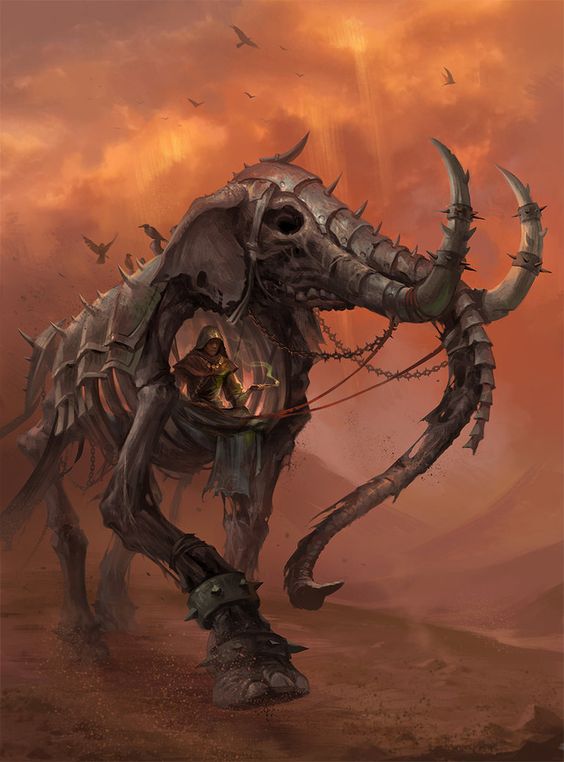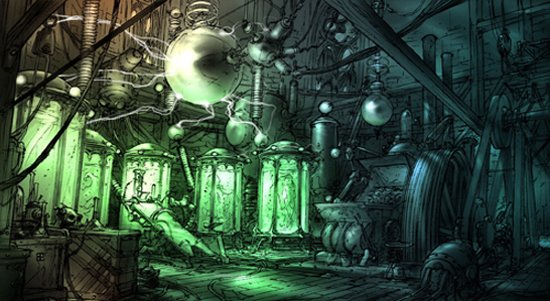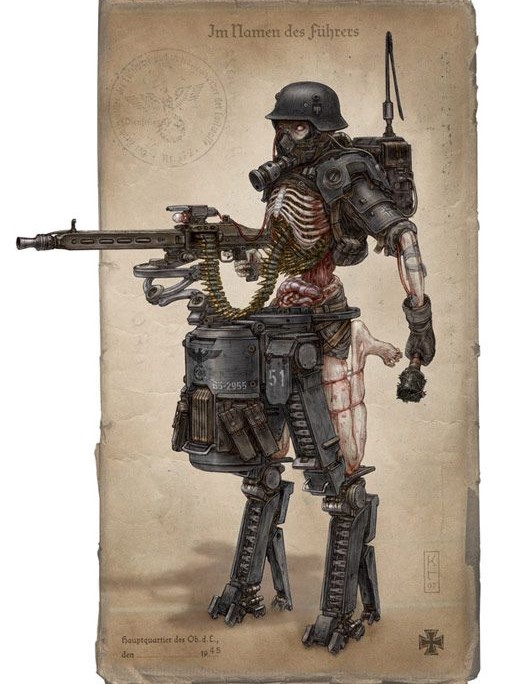Warbeasts
It was an inevitable conclusion. Mankind has always turned to our tools and machine when our flesh is insufficient. With this, we can turn the human body into a machine and a tool greater than any other.Warbeasts are amalgamations of science and Necromancy, dead flesh sewn together to form great hulking forms and reinforced with metal and machinery. The Warbeasts are the pinnacle of Necroengineering and every day some fresh horror emerge from the laboratories and butcheries of the Nekrobioteks.
Header 1
First, we put the dead to work. We made them fight our wars. Now, we will reshape them into new forms and make tales of old gods obsolete - we will be greater than they ever were.The evolution of Warbeasts had humble beginnings, attaching the limbs of animals to human corpses before reanimation or binding iron to bone to make them tougher. At their core, Warbeasts are not merely risen dead but new creatures sculpted from rotting flesh. At first, they were merely alterations and additions. Today, a single warbeast can take a dozen corpses to put together and require careful coordination between Nekromechanics and Nekrobioteks. The hulking brutes that result are limited only by their creators imagination and supply of corpses. Most are simulacrum of animal or mythological beasts however, even if they are rarely distinguishable as such between the plates of metal and stitched corpse-parts. To make a Warbeasts, corpses are first disassembled before laboriously put back together in their new form. Bones are bound together by wires or screws and joints are replaced with hinges. Flesh is sewn together and sometimes reinforced with thinner sheets of metal embedded beneath or on the skin. Nekrobioteks do their best to tie together the disparate nervous systems into a more cohesive hold, but sometimes just have to hope that it will work. Once the beast is put together, it must be reanimated. The power required to do so far outstrip that of the common undead and have so far been the domain of exceptionally skilled Nekrobioteks, a factor that stunt the growth of the field and the number of Warbeasts so far fielded. The more complicated the creature, the more electricity- and skill- is required to the point where some need so much that the discharge threatens to char the body beyond recognition before it can even rise.
Example Warbeast: The Bomb-Bat An early Mook prototype used by the Shinomas, Bomb Bats don't actually use the corpse of bats but more frequently use larger birds of prey. Their name comes more from the leather, desiccated wings and malformed face than any real resemblance to bats. The Bat is stuffed with a small explosive and send to drop into enemy camps during the night. They were successful at first, particularly at night. They would fly beyond the range of artillery and nest in enemy camps until the timer expired and the explosives detonated. They have since seen much less use as the other sides in the Long War have grown wise to the trick.
Necrology
Example Warbeast: Adi-Class Behemoth Named by its creators request that her corpse be incorporated into the final prototype when she reached the twilight of her years, the Adi-class Behemoth is a hulking brute with vaguely humanoid form. It is stooped as a great ape and stand at least twice as tall as a human. A reinforced fuel-tank is embedded inside of its hollowed out body, further protected by sheets of metal hammered into flesh and bone, which flows to an opening on the palm of both hands and fuels its flamethrower weapons.
Necromancy
Magic and science have always been tightly wound together and the warbeasts are only the latest evolution of their mutual advance. Electricity powers the spells of the Nekrobiotek and the deeper understanding how anatomy and biology aid them in formulating their will more precisely. Read more about NecromancyWarbeast Classifications
There are only two broad classes of Warbeasts at this time: Behemoths and Mooks. Mooks are warbeasts that are smaller than humans. They usually only use animal corpses in their construction and light-weight materials. Most early prototypes begin as Mooks, to see what works and what will put too great a strain on the dead frame. Behemoths are the warbeasts that are great than humans in size and strength. These immense creatures can take a considerable amount of electricity to raise and most are still in early prototype state. The Shinomas are the only ones who have fielded them in battle as terror weapons and battering rams. RESTRICTED AREA - ACCESS LIMITED TO OT5 OR OVER
Show spoiler
There is a third class of Warbeasts, known only to a select few. Their functions are still unknown but are reported to utilize the corpse things neither human nor animal. Those who know of it refer to the class as Keter and [REDACTED].





Someone should try an undead tiger or lion. that'd be scary.